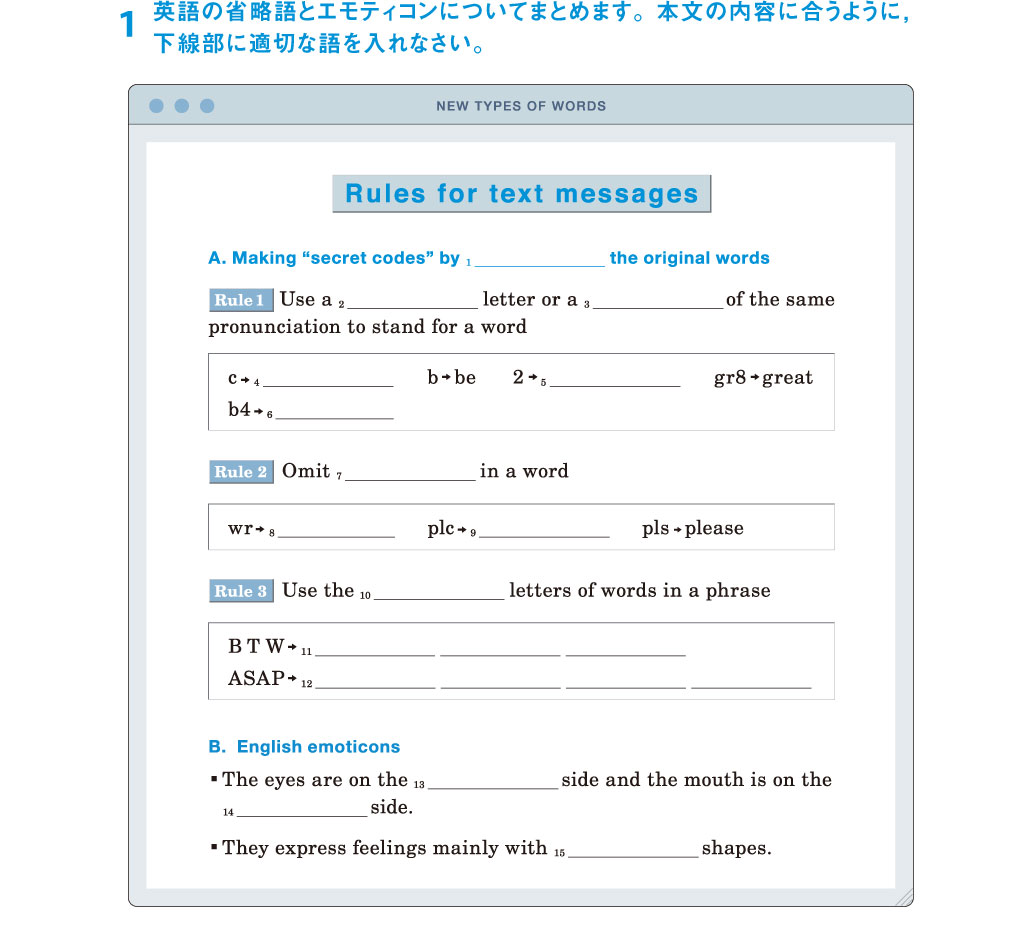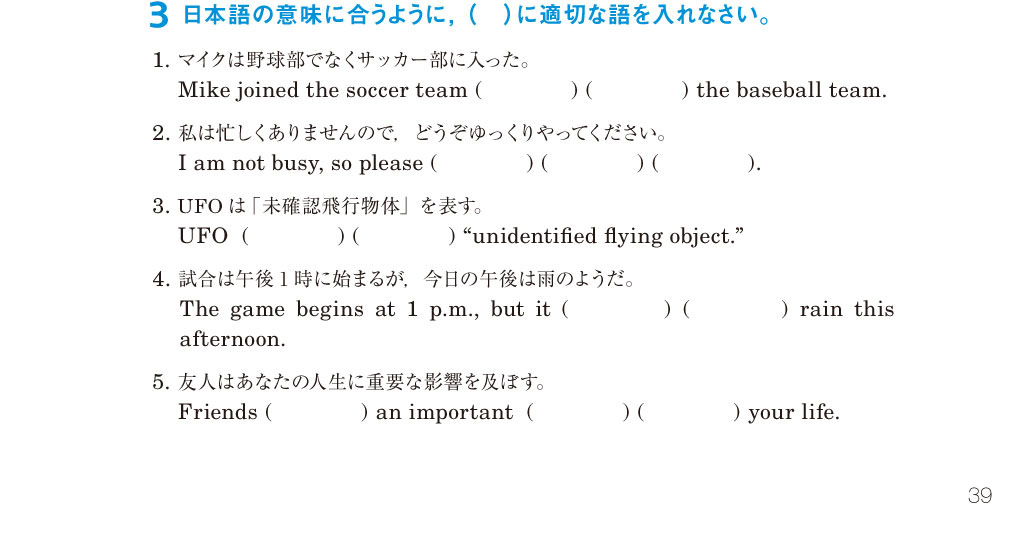















| 1. | shortening |
|---|---|
| 2. | single |
| 3. | number |
| 4. | see |
| 5. | to |
| 6. | before |
| 7. | vowels |
| 8. | were |
| 9. | place |
| 10. | first |
| 11. | by the way |
| 12. | as soon as possible |
| 13. | left |
| 14. | right |
| 15. | mouth |
| 1. | T |
|---|---|
| 2. | T |
| 3. | F |
| 4. | F |
| 5. | T |
| 1. | original |
|---|---|
| 2. | Daily |
| 3. | following |
| 4. | combination |
| 5. | creative |
| 1. | influence |
|---|---|
| 2. | notice |
| 3. | form |
| 4. | essential |
| 5. | education |
| 1. | instead of |
|---|---|
| 2. | take your time |
| 3. | stands for |
| 4. | looks like |
| 5. | have, effect on |
| 1. | In text messages, young people use a single letter or a number to shorten an original word. |
| 2. | Omitting vowels in a word is one way young people shorten a word. |
| 3. | Young people use the first word in a phrase to shorten a word. |
| 4. | English emoticons have the eyes on the right side, and the mouth on the left side. |
| 5. | In English emoticons, the mouth shape is the key part to understanding the meaning. |
![]()

















